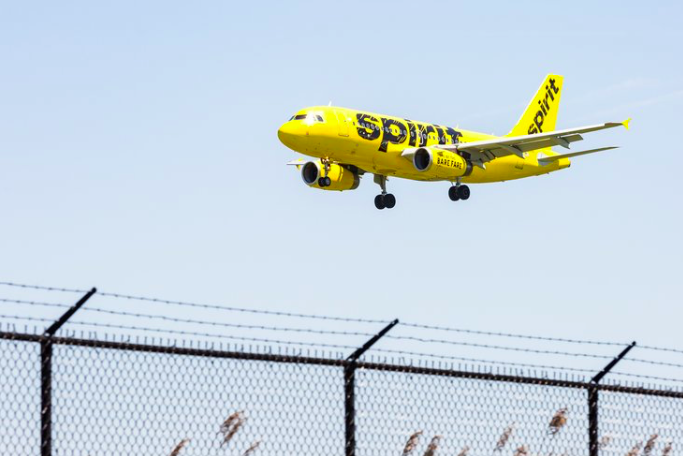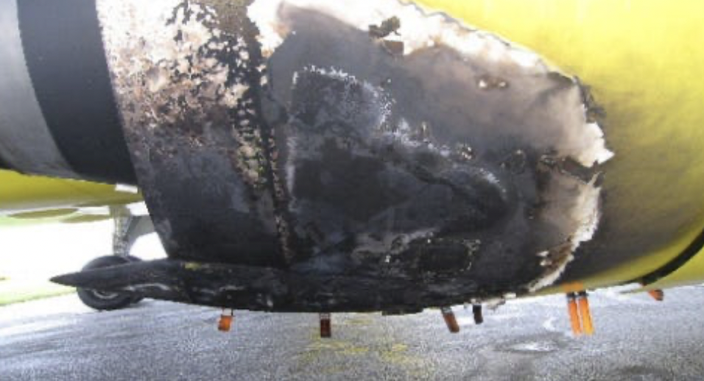
August 17, 2022
 Thom Carroll/For PhillyVoice
Thom Carroll/For PhillyVoice
A Spirit Airlines plane departing Atlantic City on Oct. 2, 2021 was struck by a bald eagle, creating a fire in its right engine and forcing 102 passengers and six crew members to evacuate the aircraft, an NTSB investigation found. The plane above is a stock image.
A Spirit Airlines plane that went up in flames at Atlantic City International Airport last October, forcing its 102 passengers to evacuate onto the runway, was damaged by a bald eagle that flew into the aircraft's engine, according to a report from the National Transportation Safety Board.
The frightening incident happened as the plane was attempting to take off on its flight to Fort Lauderdale, Florida on Oct. 2. Its right engine began spewing smoke.
News reports at the time indicated that investigators had suspected a bird was the cause of the fire. The captain of the Airbus A-320 aircraft was able to brake and come to a stop, leaving enough time for passengers to get off the plane. The engine showed signs of serious damage.
🇺🇸 One of the engines of a Spirit Airlines passenger plane caught fire during takeoff from the American Atlantic City airport due to a bird hitting it.
— The Rage X (@theragex) October 3, 2021
The crew applied emergency braking. No harm done.
A similar incident previously occurred in Cuba.
#USA pic.twitter.com/aC4b9ksaq2
Spirit Airlines initially stated there were no injuries, but the NTSB report notes that three passengers and one of six crew members suffered minor injuries during the evacuation.
The NTSB says the bird that struck the engine was an immature male bald eagle weighing approximately nine pounds. The Federal Aviation Administration's certification guidelines required the plane's geared turbofan engine to be able to "ingest" 6.05 pounds.
Bird remains and feathers collected from the scene of the accident were sent to the Smithsonian Institution National Museum of Nature History in Washington, where staff members in the Division of Birds identified the animal as a bald eagle.
The NTSB described the probable cause of the fire as follows:
The ingestion of a bird into the right engine during the takeoff roll caused a fan blade to fracture near the blade platform resulting in high fan blade off loads and engine vibrations sufficient to result in an eventual failure of a fuel tube in the right engine that sprayed fuel onto hot engine cases, igniting an undercowl engine fire and triggering a rejected takeoff.
Bird strike events are estimated to occur in 1 of every 2,000 flights, although the vast majority of these incidents go unreported. Birds are not drawn to jet engines due to a vacuum effect. They typically only strike engines if their flight paths are aligned, most often during takeoff.
Deadly bird strikes have occurred since the early days of aviation, but their numbers have increased along with the growth in global air traffic.
The photo above shows the damage incurred by the right engine of the Spirit Airlines Airbus A-320 when it was struck by a bald eagle while departing Atlantic City on Oct. 2, 2021. The bird strike caused a fire and the plane was evacuated.
The deadliest incident in the United States happened in October 1960, when an Eastern Airlines flight crashed into Boston Harbor, killing 62 people on a multi-leg flight that was headed first to Philadelphia. Ten passengers miraculously survived. An investigation determined that a flock of starlings had crossed paths with the Lockheed L-188 Electra at about 120 feet of elevation. Several of the birds wound up in the plane's propeller engines, causing them to fail and the plane to dive into the harbor in a span of about 20 seconds.
Bald eagles, once critically endangered in New Jersey and Pennsylvania, have recovered over the last several decades as a result of restoration efforts by wildlife officials and the banning of pesticides that prevented them from reproducing.
 Courtesy/NTSB
Courtesy/NTSB